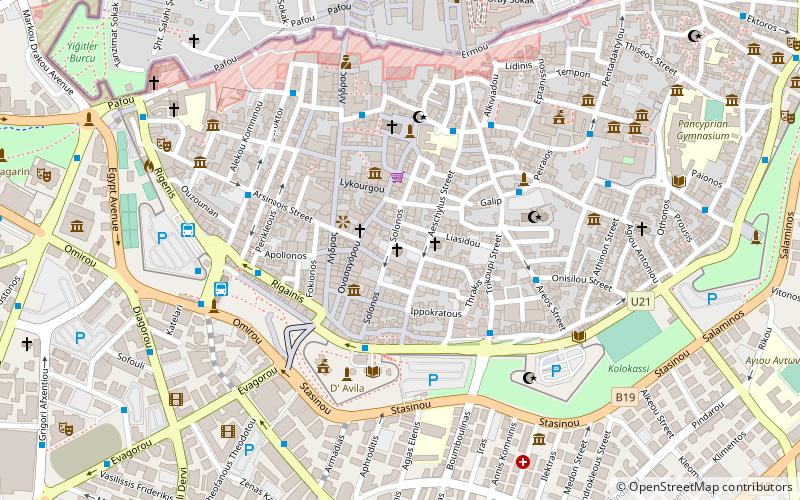Nicosia aqueduct, Nicosia

Facts and practical information
Nestled within the urban fabric of Cyprus's capital, the Nicosia aqueduct stands as a testament to the island's rich history and engineering prowess. This historical canal, once the lifeblood of the city, provided a vital source of water for the inhabitants of Nicosia, dating back to the Roman period.
Throughout the centuries, the aqueduct has been refurbished and expanded, particularly during the Venetian and Ottoman eras, to cater to the growing needs of the city. Its architecture reflects the various influences and the practicality of its design, aimed at ensuring a steady flow of water from distant sources to the heart of Nicosia.
Though no longer in operational use, the remnants of the Nicosia aqueduct serve as a cultural landmark, attracting visitors and history enthusiasts. The aqueduct's arches, part of the more visible sections, have become iconic features in the cityscape, often highlighted by educational tours and heritage trails.
Preservation efforts have been made to maintain the integrity of this historical site, ensuring that future generations can appreciate the ingenuity of past civilizations. While not as towering as other monuments, the Nicosia aqueduct's subtle charm lies in its historical significance and the story of human development it carries within its stones.
Nicosia
Nicosia aqueduct – popular in the area (distance from the attraction)
Nearby attractions include: St. Sophia Cathedral, Büyük Han, Famagusta Gate, Cyprus Folk Art Museum.
Frequently Asked Questions (FAQ)
Which popular attractions are close to Nicosia aqueduct?
How to get to Nicosia aqueduct by public transport?
Bus
- Archbisphopric • Lines: L1 (1 min walk)
- Nicosia Multipurpose Centre • Lines: L1 (2 min walk)


















